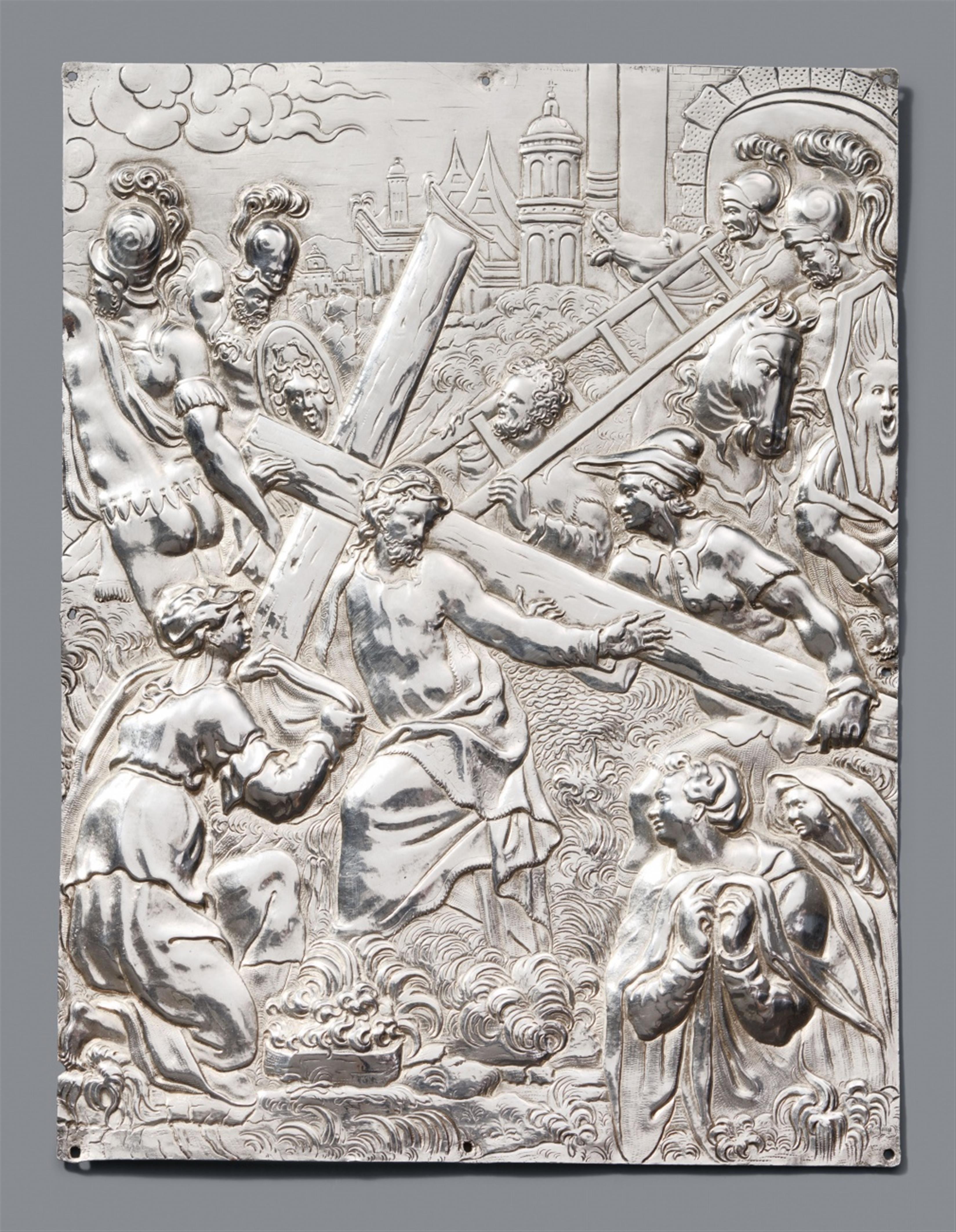A silver plaque with Christ carrying the cross
Rectangular silver plaque with eight mounting holes along the edges. Depicting a finely embossed and engraved scene of two of the stations of the cross. Christ is shown semi clothed and walking towards the left carrying the cross whilst Simon of Cyrene stands behind him on the right supporting the lower beam. Veronica kneels beside him, offering her veil. In the right foreground Unmarked. H 22.7, W 17.2 cm, weight 237 g.
17th century.
In the 13th century, the Franciscan order popularised the idea of the stations of the cross as an experience that could be walked through and prayed. For the Franciscans, piety was especially tied to the idea of meditation on suffering. In the late Middle Ages, the various stations of the cross began to be marked out more frequently with pictorial representations. These initially took the form of reliefs and sculptures, but with the development of the printing press, the iconography became more well known and came increasingly to be used as a propaganda tool by the Roman Catholic Church. Albrecht Dürer had already depicted the motif shown here in a woodcut before 1500, and the kneeling figure of Veronica was presumably based directly on his design. The figure of Christ shown striding forward and looking back at the same time is also found in almost all of his depictions. However, the exact model upon which the silversmith who designed the plaque, presumably active in southern Germany, based the motif has not yet been found. In his standard work on Augsburg silver, Helmut Seling records a similar plaque made by the Augsburg silversmith Hans Jacob I Bair in around 1620 - 30. Seling suspects that different templates were used, which have a "generally Italianizing character in common" (vol. I, p. 58). Throughout the course of the 17th century, the stations of the cross, originally consisting of seven stations, were expanded to 14. The plaque presented here, as well as the one published by Seling, depict Stations 5 and 6 in a condensed form. The work was probably created for a house altar.

